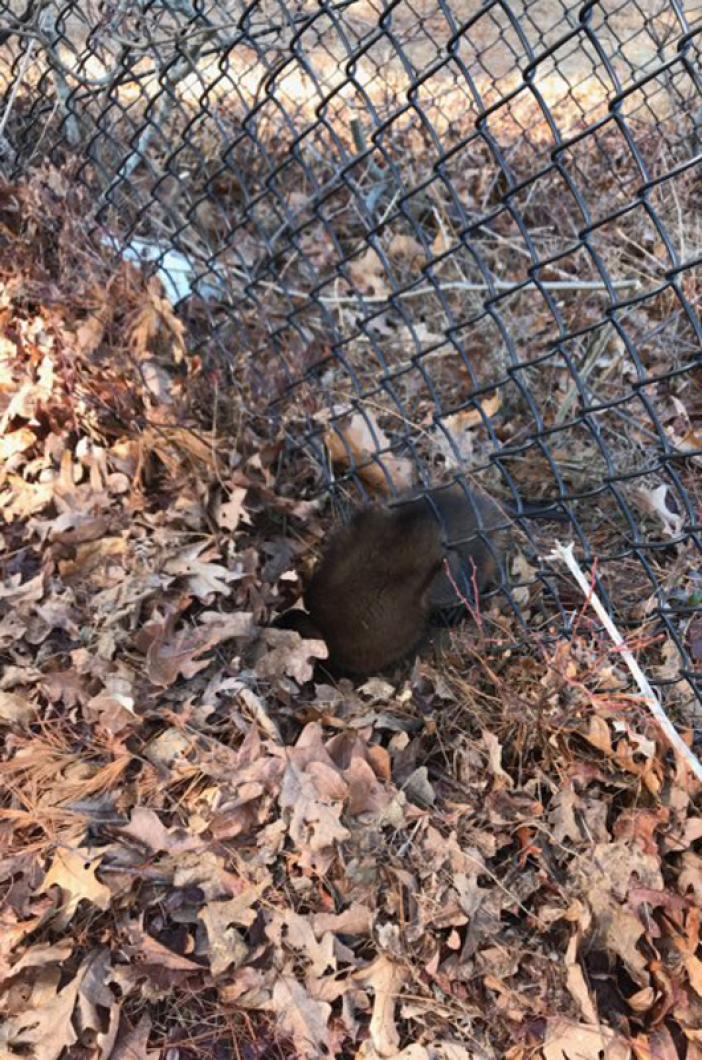The animal was not at all on the fence about what needed to be done.
It was, in fact, in the fence; clearly a sticky, or perhaps stuck situation. A report came in last week of a rodent trapped in a chain-link fence. The caller needed an identification and assistance.
Rodent, I inquired, was it a rat? Oh no, came the reply, this was bigger than a rat. A photo showed a mass of brown fur, head unseen, buried under the leaf litter, with each half of its body on a different side of the fence. It was squeezed in the middle and wasn’t able to move either way — clearly in a bit of a jam.
The tail, however, told the tale of identification. It had a rounded rat-like appearance and lacked fur. This, coupled with the size of the animal, pointed to the identification of the creature as a muskrat.
Surprisingly, it was not an unusual situation, even if it was a strange location. A quick web search yields stories and photos of muskrats in the same squeezed situation.
Muskrats rarely leave their watery neighborhood, ranging only up to 150 feet to find food. In early spring, ahead of mating, muskrats may disperse further in search of a new den. However, dispersing animals rarely go more than 500 feet from their natal wetlands. The location of the fence-bound friend was quite a distance from water.
How it got there was beyond the scope of the current situation. The resolution of the problem was clear, though the solution was out of the muskrat’s hands. Releasing the animal wouldn’t be difficult if you have the right tools and the desire to assist an animal in distress. It is not always recommended to jump into a rescue, as well-intentioned folks can sometimes make the situation worse or injure the animal or themselves in the process.
Wildlife can and do behave aggressively, especially when they are in distress, and, additionally, can transfer diseases to humans. In the case of the muskrat, these animals are known to be biters and scratchers, and they can carry diseases such as tularemia, giardiasis, rabies and leptospirosis. So it should go without saying: if you don’t have good reason to be confident that you can help the animal without risk of danger to yourself from their fleas, teeth, claws, or secretions, it’s wise to call a wildlife expert for wild animals or the animal control officer for domestic ones.
This creature was relatively calm, and a tool was obtained. Coming from the back end of the animal (away from its four incisors and its sharp claws) and using a long-handled lopper to cut the fence was the safest way to release the reluctant rodent.
A couple of snips and the muskrat was easily freed, making it a good day for the rescuer and the rescuee. Hopefully the muskrat made its way quickly to the nearest watering hole, and learned a valuable lesson about trying to squeeze through tight spaces.
Suzan Bellincampi is director of the Felix Neck Wildlife Sanctuary in Edgartown, and author of Martha’s Vineyard: A Field Guide to Island Nature.




Comments
Comment policy »